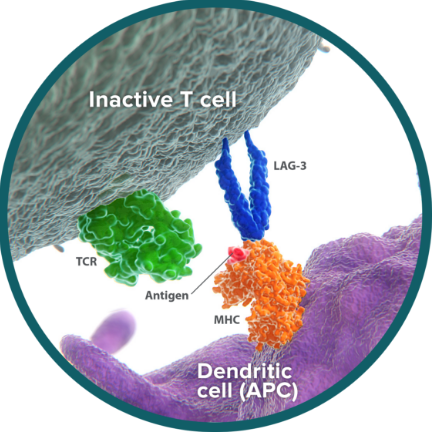Hi-Affi™ Humanized LAG-3 Immune Checkpoint Knockin Mouse Model
Recent achievements in cancer immunotherapy especially immune checkpoint modulators are reshaping the way of conventional cancer treatment. Nowadays, the rapid development of immune checkpoint targeting drugs has become one of the hotspots that are attracting increasing research interest. Hence, to develop a highly predictive and relevant disease model is in urgent need. In this context, human immune checkpoint knock-in mice (e.g. CD27, CD28, CD137, and GITR) were invented to more accurately test the efficacy and safety profile of immune checkpoint modulators. Equipped with leading transgenic technique platform as well as a specialized team of experts, Creative Biolabs has launched our Hi-Affi™ humanized LAG3 immune checkpoint knock-in mice to our global customers.
Structural Aspects of LAG3
Lymphocyte-activation gene 3 (LAG3, also designated as CD223) has been shown to act as a co-inhibitory molecule expressed on activated T cells, NK cells, B cells, and plasmacytoid dendritic cells. LAG3 have four IgG domains with high structural homology with CD4 molecules while amino acid is less than 20% homologous to CD4. LAG3 contains a unique “extraloop” in the membrane distal D1 domain. It has been proved that LAG3 bind to its major ligand class II MHC primarily through the action of a small set of amino acids localized to the D1 domain. In addition, the intracellular portion of LAG3 contains a unique motif (KIEELE) that that is required for LAG3 modulation of T cell function.
LAG3 Immune Checkpoint Pathway
LAG3 is an immune checkpoint receptor binding to the antigen-MHC complex, which presents antigen for recognition by T cells. LAG3 are proved to negatively regulate T-cell proliferation and development of lasting memory T cells.
Repeated exposure to tumor antigen leads a continual increase in the presence and activity of LAG3 which is analogous to PD-1. This ruthless signaling steadily erodes the ability of T cells to kill tumor cells leading to T-cell exhaustion. It has been demonstrated that Tregs suppress the immune response and are triggered by LAG3. In cancer, Tregs expressing LAG3 gather around tumor sites and show potent suppression of cytotoxic T cells.
 Fig.1 LAG3 binds to the antigen-MHC complex
Fig.1 LAG3 binds to the antigen-MHC complex
LAG3 could be a better immunotherapy target than PD-1 or CTLA-4 since antibodies to these two immune checkpoints only activate effector T cells while do not inhibit Treg activity. In previous studies, an antagonist LAG-3 antibody can both activate T effector cells and inhibit induced Treg suppressive activity.
Development of LAG3 Immune Checkpoint Knock-In Mice
Since anti-LAG-3 antibodies could affect Tregs function and activate T effector cells. LAG-3 seems to be a more prospective target in cancer immunotherapy. LAG-3 immune checkpoint is being focused in the research seeking for novel approaches to treat malignant tumors and autoimmune disorders. Furthermore, LAG-3/PD-1 combinatorial immunotherapy may accelerate the tumor-specific responses rather than the non-specific or self-antigen-specific immune responses, and thus is likely to be less toxic than the CTLA-4 blockade. Several key preclinical studies suggest its critical role of blocking antibody drugs during cancer treatment.
With the aid of our Hi-Affi™ human LAG3 KI mouse model, researchers can study the in vivo potency of LAG3-targeting agents in human version. Creative Biolabs has also developed a serial of Humanized Immune Checkpoint Mouse Models in addition to LAG3, with comprehensive validation and immunoprofiling data.
Meanwhile, we can also provide a broad range of immune checkpoint mouse models, including but not limited to:
In addition, we also provide a serial of other Humanized Mouse Models as follow. Please feel free to contact us for more details.
For Research Use Only.
